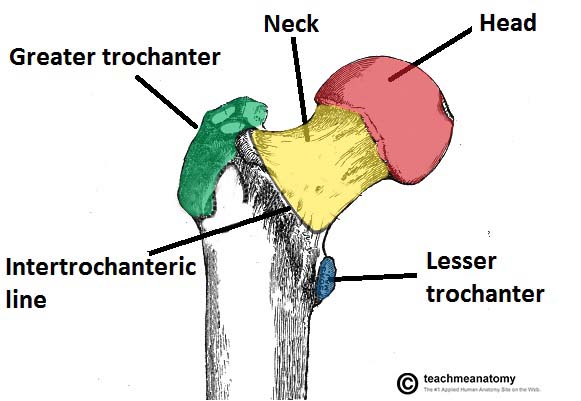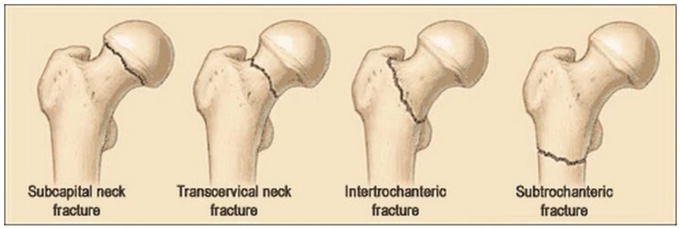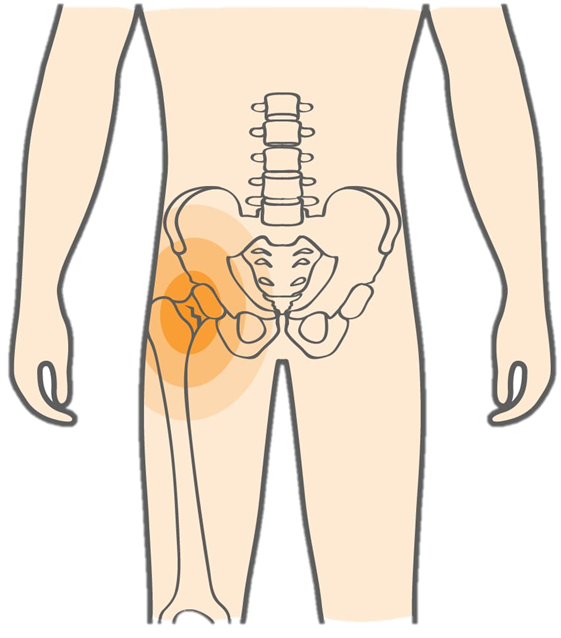Femoral neck fractures are a specific type of intracapsular hip fracture. The femoral neck connects the femoral shaft with the femoral head. The hip joint is the articulation of the femoral head with the acetabulum. The junctional location makes the femoral neck prone to fracture.
Athletes who have an acute injury that causes a femoral neck fracture will feel immediate and often severe groin pain at the time of injury, followed by inability to bear weight on the side of the injury. With a femoral neck stress fracture, symptoms usually begin gradually and then may increase over time.
Causes
Femoral neck fractures in athletes can occur either as stress fractures (due to repetitive weight bearing on the bone) or as traumatic fractures (from a severe collision on the field). Most common in long distance runners, stress fractures of the femoral neck start out as tiny cracks that extend with continued loading on the bone over time.
Traumatic femoral neck fractures typically happen as a result of a collision, or fall, in contact sports.
Stress fractures of the femoral neck are most common in these sports:• Long distance running• Football training season• Tennis
Traumatic fractures of the femoral neck can occur most commonly in these sports: •Hockey• Rugby• Football
Anatomy

The femur is the largest bone in your body, extending from the hip joint to the knee joint. The top part of the femur, called the femoral head, has a rounded ball shape that fits into a socket in the pelvis to form the “ball-and-socket” hip joint.
The long part of your femur bone, which spans your upper leg, is called the femoral shaft. The femur bone also has a short, narrower section that connects the femoral head to the femoral shaft, called the femoral neck.

Grades
Femoral neck fractures are classified into four grades of severity using the “Garden” system:
•Garden I: Partial fracture in which the femoral neck hasn’t been broken through completely.
• Garden II: Complete fracture in which the bone hasn’t moved out of place, called a nondisplaced fracture.
• Garden III: Complete fracture in which the broken ends of the bone have moved out of place but only only partially, considered a slightly to moderately displaced fracture.
• Garden IV: Complete fracture in which the broken ends of the bone have moved substantially and don’t line up, called a severely displaced fracture.
Displaced fractures are most common with acute injuries. In the early stages, stress fractures of the femoral neck are usually nondisplaced. However, without appropriate care, these fractures can become displaced over time.
Treatment
Some stress fractures of the femoral neck can be managed non-surgically. This may be the case for a stress fracture that is incomplete and/or nondisplaced, and is detected early. Non-operative treatment focuses on reducing weight bearing on the hip that is fractured.
Displaced femoral neck fractures, as well as some nondisplaced femoral neck fractures, require surgical treatment by an orthopedic surgeon. Depending on the severity of the fracture and the degree of bone displacement, one of several possible surgical procedures, will be performed under anesthesia.
- Closed reduction and internal fixation (CRIF)
- Open reduction and internal fixation (ORIF)
- For some severely displaced femoral neck fractures, a partial hip replacement (hemiarthroplasty) or a total hip replacement (arthroplasty) may be the best solution.
Contact Me
Let's chat!
Need more information? Send me an email or drop me a line. I don’t bite!
- Charlotte@rehabontheroad.co.uk
- 07971448719

